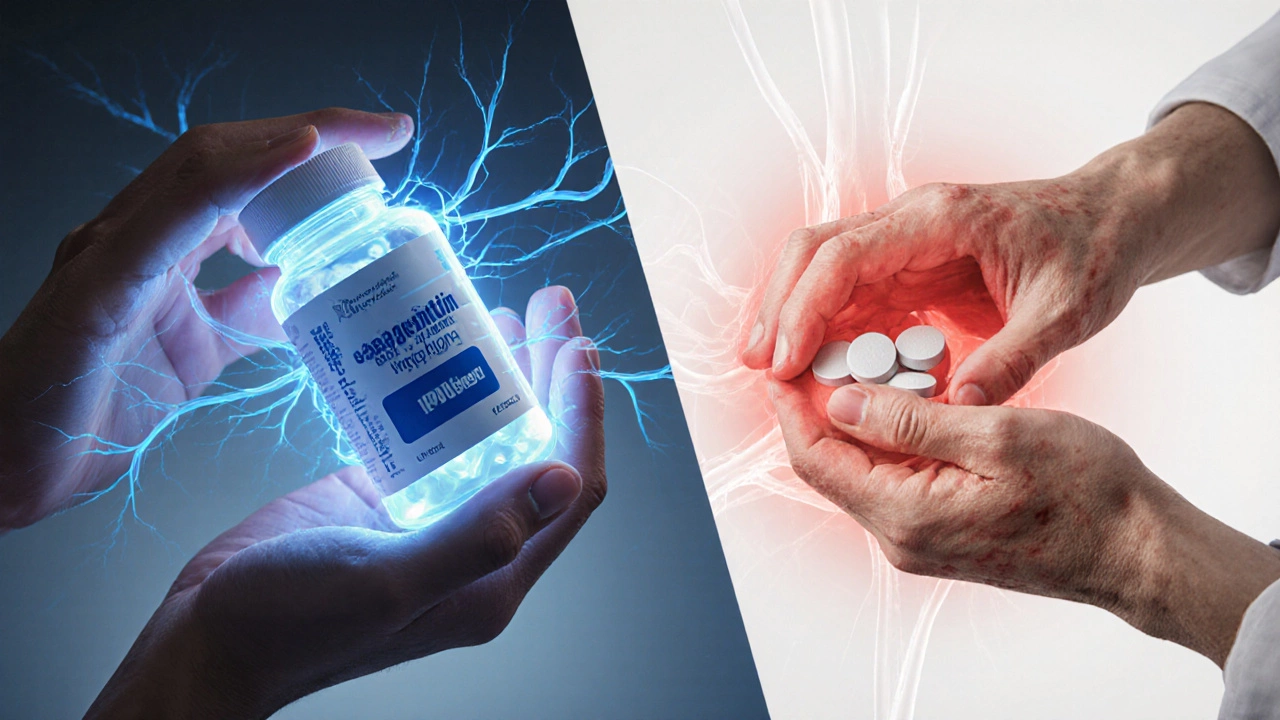Chronic Pain: What It Is and How to Deal With It
If you’ve been hurting for months or years, you’re probably dealing with chronic pain. It’s not just a bad headache or a sore muscle – it’s a long‑lasting discomfort that keeps coming back and can affect everything you do.
Most chronic pain comes from things like arthritis, back injuries, nerve damage, or old surgeries. Sometimes doctors can’t point to a clear cause, but the pain still feels real. Knowing the source helps you pick the right treatment, so a quick check‑up is worth the time.
Common Ways Doctors Treat Chronic Pain
One of the easiest ways to start relief is with medication. For severe pain, doctors often prescribe opioids, but they come with risks, so they’re usually a short‑term solution. Many patients find better results with a mix of non‑opioid drugs, such as NSAIDs, muscle relaxers, or nerve‑pain meds like gabapentin.
Our article “Best Prescriptions for Severe Pain: Medications and Relief Options Explained” breaks down which pills work best for different pain types. It also warns about side effects so you can talk to your doctor armed with the facts.
Beyond pills, physical therapy is a big player. A physiotherapy session can teach you exercises that strengthen the area around the pain, improve posture, and reduce strain. If you’ve never tried it, the guide “What Happens During a Physiotherapy Session? Step‑by‑Step Guide & Tips” shows what to expect and why the hands‑on work matters.
Everyday Steps to Lessen the Ache
While you’re waiting for medical help, a few daily habits can lower the intensity of chronic pain. Gentle stretching each morning, a short walk, and a warm shower can loosen tight muscles. Over‑the‑counter creams with menthol or lidocaine give a quick numbing feel for localized spots.
Mind‑body tricks also work. Simple breathing exercises, guided meditation, or listening to calming music can shift attention away from the pain. Try the 4‑7‑8 breathing pattern: inhale for four seconds, hold for seven, exhale for eight. Do it a few times when the pain spikes.
If you’re dealing with nerve‑related pain, keep the affected area warm. Heat packs improve blood flow and can calm nerves. For joint pain, applying a cold pack right after activity can cut swelling.
Staying hydrated and eating foods rich in omega‑3 fatty acids—like salmon, chia seeds, or walnuts—helps reduce inflammation. Cutting back on sugary drinks and processed snacks can also make a noticeable difference.
When pain interrupts sleep, consider a night‑time routine: dim lights an hour before bed, avoid screens, and use a supportive pillow. A good night’s rest resets your pain threshold, making you feel less sore the next day.
If you notice any new symptoms—like numbness, sudden weakness, or severe swelling—call your doctor right away. Those signs could point to a complication that needs urgent care.
Bottom line: chronic pain is tough, but a blend of proper medication, physical therapy, and simple daily habits can bring real relief. Start with a doctor’s visit, check out our detailed guides, and try the easy lifestyle tweaks above. You don’t have to live with constant ache—take the first step today.
Is Gabapentin a Very Strong Painkiller? What It Really Does for Chronic Pain
Gabapentin isn't a strong painkiller like opioids-it's a nerve-calming medication used for specific types of chronic nerve pain. Learn how it works, who it helps, and what alternatives exist.
What Does Constant Pain Do to a Person? The Hidden Toll of Chronic Pain
Constant pain doesn't just hurt-it rewires your brain, drains your energy, and reshapes your life. Learn how chronic pain affects your body, mind, relationships, and identity-and what real healing looks like.
Living With Chronic Pain: Finding Meaning and Value Beyond Suffering
Chronic pain changes everything, but it doesn't have to steal your sense of purpose. This honest guide explores real ways to find meaning and live better with constant pain.
Chronic Pain: Identifying Symptoms, Causes, and Effective Management
Learn what qualifies as chronic pain, the symptoms, causes, and how to find relief. Discover practical tips and facts from real people and specialists.
Gold Standard Treatment for Chronic Pain: What Really Works?
Chronic pain isn’t just annoying—it can run your life if you let it. But there is a widely recognized 'gold standard' for treatment that blends several strategies. This article digs into why no single pill or trick can fix everything, and why a team-based approach is usually best. Expect real-world tips, facts, and a breakdown of what actually works (and what doesn't). If you've been searching for answers, get ready for some clarity.
What to Do When Pain Is Unbearable: Straightforward Chronic Pain Relief Tips
Unbearable pain can hijack your life in ways most people never see coming. This article digs into what really helps when nothing seems to work anymore. You’ll find honest talk about medication, but also practical changes you can make right away at home. We break down surprising ways that the brain and body respond to pain. Get clear, no-nonsense advice on when to push through and when to reach out for help.
Chronic Pain Treatment: What’s the Most Common Option?
Wondering how most people actually manage chronic pain? This article breaks down the most widely used treatment, explains why doctors lean toward this option, and offers tips for getting the most out of your pain plan. You’ll pick up facts about how treatment choices have shifted, learn what to expect from your doctor, and find out what can help if one approach isn’t enough. If you’re stuck with pain that just won’t quit, this is a straight-talking look at what usually comes next.
Strongest Muscle Relaxer for Back Pain: Real Answers for Lasting Relief
When back pain hits hard, the search for the strongest muscle relaxer can feel overwhelming. From prescription meds to natural methods, not all treatments offer the same results—or side effects. This article sorts through what actually works, which muscle relaxers doctors prescribe for severe pain, and safer ways to get relief. Get honest advice without the medical jargon, along with tips that can help you feel better faster. No hype, just straight talk on managing tough back pain.
Best Tablets for Chronic Pain: What Actually Works?
Cutting through the confusion, this article breaks down which tablets really help with chronic pain. Find out what painkillers doctors actually recommend, how they compare, and what to watch out for. Get the lowdown on safe use, real-world effectiveness, and side effects—without the medical jargon. Get answers to the questions everyone with chronic pain actually asks. Make smarter choices for managing day-to-day pain.
Stop Obsessing Over Chronic Pain: Real Techniques That Work
Obsessing over chronic pain can drain your energy and mess with your mood, making things feel even worse. This article dives into straightforward strategies to break the mental loop and regain control. You'll get real tips that go beyond just managing the pain—it's about changing how you think about it. Find out why your brain latches onto pain, how to shift focus, and what actually helps long-term. No fluff, just practical advice that’s easy to try.
Worst Pain a Human Can Feel: Understanding Chronic Pain's True Impact
What's the worst pain a human can feel? This article breaks down what types of pain hit hardest, how chronic conditions affect everyday life, and why some pains just don't let up. Get real-life examples, easy-to-understand tips, and honest advice on both treatment and coping. We dig into why pain is such a personal experience, and what you can actually do if you or someone you know lives with it.
Why Do I Still Feel Pain After Taking Painkillers?
Painkillers are supposed to make pain go away, but sometimes the ache sticks around no matter what you take. This article breaks down why pain meds don’t always work, explores what can mess with their effectiveness, and gives real tips to handle ongoing pain. We’ll look at how your body and mind can impact results and share strategies to get better relief. Understanding what’s happening is the first step toward feeling better.












